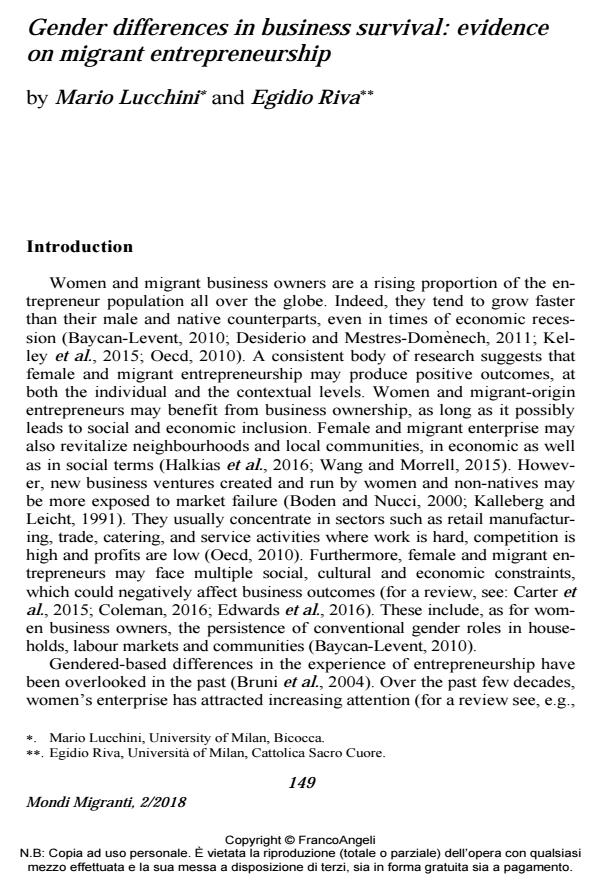Gender differences in business survival: evidence on migrant entrepreneurship
Journal title MONDI MIGRANTI
Author/s Mario Lucchini, Egidio Riva
Publishing Year 2018 Issue 2018/2
Language English Pages 20 P. 149-168 File size 296 KB
DOI 10.3280/MM2018-002008
DOI is like a bar code for intellectual property: to have more infomation
click here
Below, you can see the article first page
If you want to buy this article in PDF format, you can do it, following the instructions to buy download credits

FrancoAngeli is member of Publishers International Linking Association, Inc (PILA), a not-for-profit association which run the CrossRef service enabling links to and from online scholarly content.
This paper draws on a longitudinal dataset of 165,515 firms that were economically active between 1997 and 2012 in Milan (Italy) to study gender dif-ferences in business survival within and between different eighteen groups, formed on the basis of the country of birth of the entrepreneurs. Kaplan-Meier estimates and piecewise-constant exponential hazard models show that, holding a set of individual and business covariates constant, the risk of business closure is always higher for female single proprietors. The highest gender differences in business survival are found among entrepreneurs born in Bangladesh, Morocco, and Sene-gal. Conversely, for female single proprietors born in Italy and China median sur-vival time and the risk of business closure are quite similar to those of their male counterparts.
Keywords: Migrant entrepreneurship; gender differences; business survival; piece-wise constant; Italy.
- Structural Equation Models to Determine the Relationship Between Startup Incubation Stages and the Graduation Rate of Incubators in Spain Ana Asensio-Ciria, Carmen De-Pablos-Heredero, Francisco José Blanco Jiménez, José Luis Montes Botella, Antón García Martínez, in Sustainability /2025 pp.733
DOI: 10.3390/su17020733 - Multidisciplinary Approach to Entrepreneurship Education for Migrants Jean-François Rougé, pp.112 (ISBN:9781799829256)
Mario Lucchini, Egidio Riva, Gender differences in business survival: evidence on migrant entrepreneurship in "MONDI MIGRANTI" 2/2018, pp 149-168, DOI: 10.3280/MM2018-002008